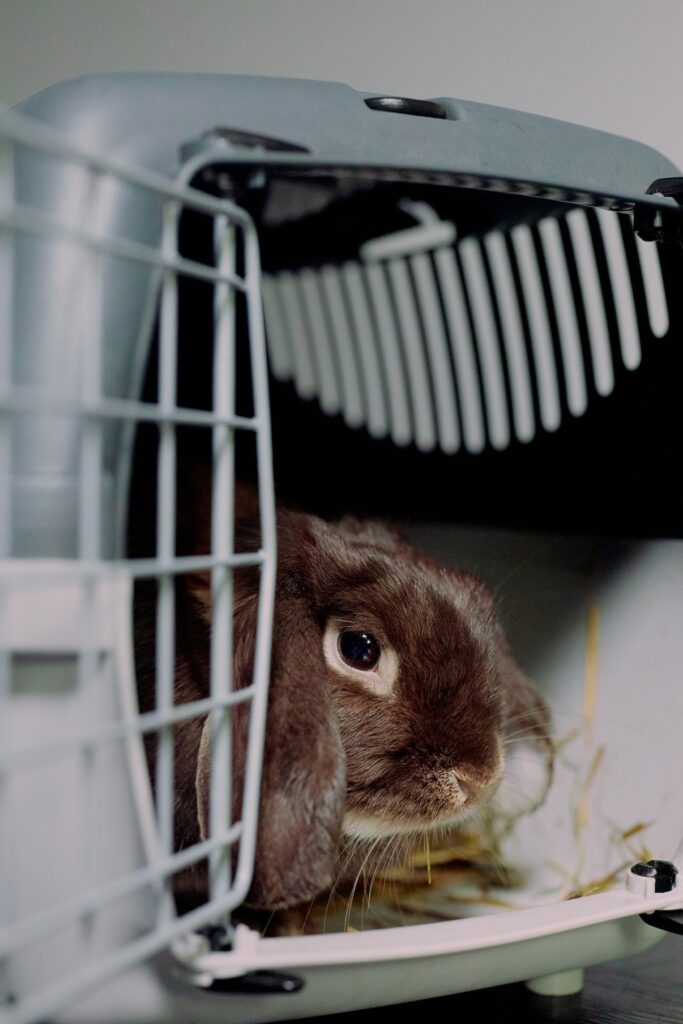Why Should You Insulate a Rabbit Hutch?
You probably don’t think much about how to insulate a rabbit hutch. But if you want to keep your bunny warm in the winter and cool in the summer, it’s a good idea to insulate your hutch. This article will show you how to do it.
Insulating a rabbit hutch is important in creating a comfortable and safe home for your pet rabbit. Noise levels can reduce your rabbit hutch, making it more peaceful. Lastly, insulating your rabbit’s home can reduce drafts that can cause discomfort or illness.
How to Insulate a Rabbit Hutch
Insulating a rabbit hutch is not difficult and can be done with some basic supplies you may already have around your house. The most important step is to choose the right materials that are free of toxins and provide plenty of insulation.
Here are the steps on how to insulate a rabbit hutch:
- Measure the area: Measure the inside of the hutch, so you know exactly how much material you will need to cover it completely with insulation.
- Choose materials: Look for high-quality and non-toxic materials like cotton batting or synthetic fibre insulation sheets specifically designed for pet enclosures.
- Install insulation: Depending on the material you are using, install it either by attaching it directly to the walls of the hutches or by laying it down over surfaces like bedding and floors (for batting). Ensure all sides of the enclosure are protected with insulation and fully covered for optimal protection from cold temperatures and winds.
- Add extra layers: Add additional layers of curtains or thicker blankets around entrances or windows near air vents to keep out any chillier air drafts during colder months.
Materials To Use For Rabbit Hutch Insulation
There are several different types of materials that work well for insulating a rabbit hutch, depending on your needs and budget:
Cotton batting:
This type of material provides excellent thermal resistance while being non-toxic, affordable and safe for animals – perfect if you have multiple pets in one enclosure!
It also comes in different thicknesses, so you can choose what kind works best for your pet’s needs. Thicker layers will provide better protection against cold weather, while thinner ones will work better in warmer climates where overheating could be an issue.
Synthetic fibre insulation sheets:
These sheets provide similar thermal performance as cotton batting but with added durability against wear and tear due to their solid construction rather than the loose fibres in battings.
They come in various thicknesses too. They’re also more affordable than foam boards but still pricier than cotton battings, making them an ideal middle ground between quality/price ratio if necessary.
Foam board insulation sheets:
A great choice if budget isn’t much of an issue. These panels offer exceptional thermal resistance performance thanks to their rigid construction, which makes them very efficient at blocking cold air drafts coming through walls or windows near air vents.
However, this type tends to be expensive since they usually come pre-cut into specific dimensions tailored towards specific building projects such as insulating attics etc. The price varies depending on the size purchased.
Tips to Keep Your Bunny Cool in the Summer and Warm During Winter
- In the winter, insulate your rabbit hutch to keep the heat in and add extra layers of blankets or curtains around entrances or windows near air vents.
- In the summer, put up a sunshade to keep direct sunlight from hitting the hutch and ensure plenty of ventilation to keep your bunny cool.
- Make sure your bunny has plenty of bedding or straw to burrow into in both seasons for extra warmth or coolness. Place your hutch in an area that’s not too close to any heat sources or air conditioning units to prevent overheating or drafty winds from coming through.
- Check the temperature of their enclosure several times a day with a thermometer and adjust insulating materials based on how hot/cold it is outside.
By insulating your rabbit hutch, you can keep them safe, comfortable, and happy all year round! With the right materials and tips, there’s no need to worry about how well they’ll fare during extreme temperatures – just follow these guidelines, and your bunny will be snug as a bug in no time! Happy insulating!
Wrap Up
A well-insulated rabbit hutch can help keep your furry friend warm in the winter and cool in the summer. In this blog post, we’ve outlined different materials you can use to insulate your hutch and tips on how to keep your bunny comfortable during extreme temperatures. By following these guidelines, you can ensure that your bunny stays safe and happy all year round!
Furrr.co.uk offers insurance for your pet rabbit to help ensure they are taken care of in an emergency. Visit our website to learn more about our plans and how to get your bunny insured today!










